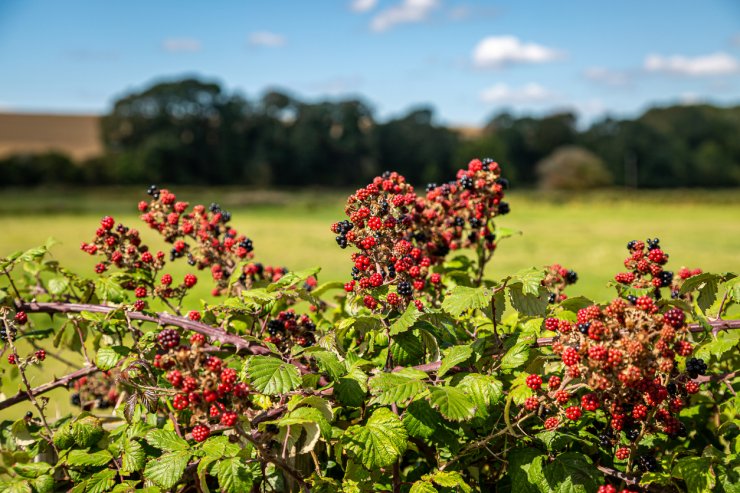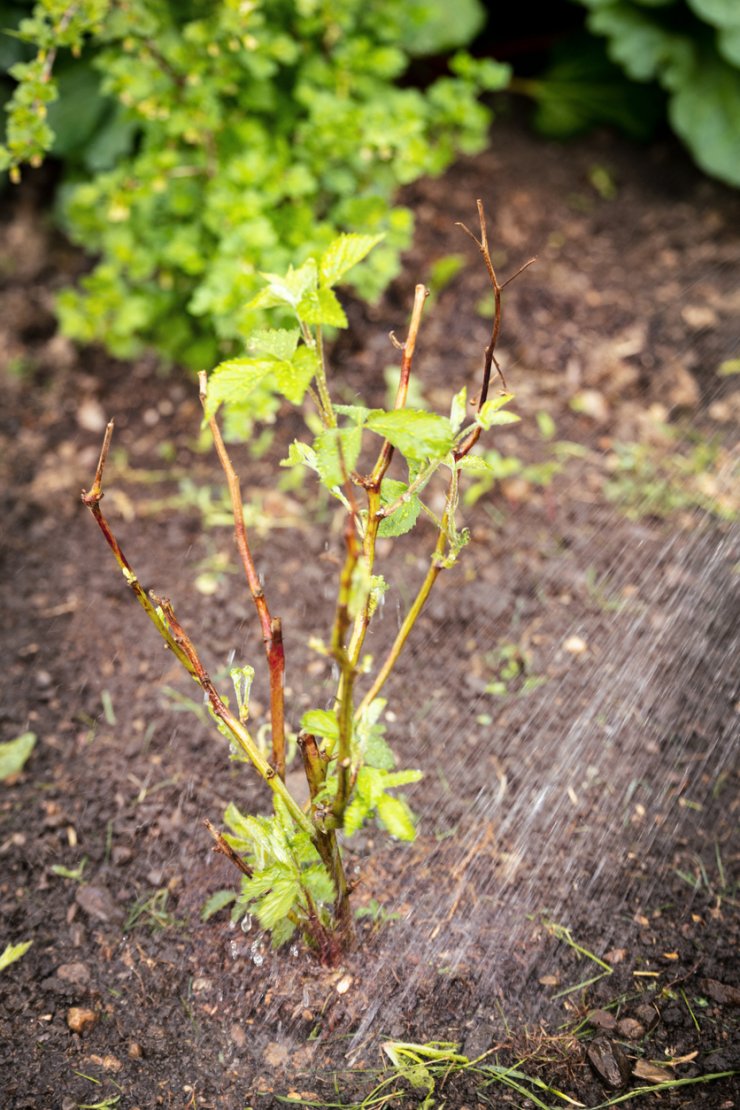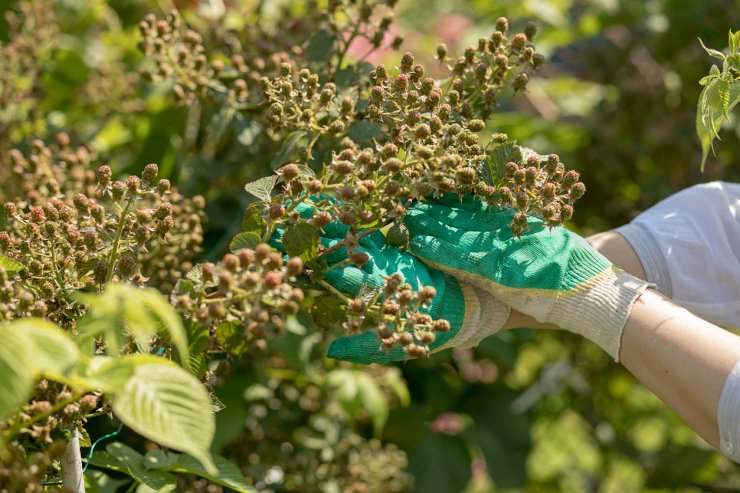
Blackberry bush
Blackberry plants require little work over the years, but you can’t ignore them completely if you want the best yields. Here’s how to nurture your plants along to get the best harvest.
Blackberries in pots
As with anything in a pot, blackberries in containers require more water than if they’re planted in the ground. Water whenever the top inch of soil is dry, even if that means watering every day.
Use a complete balanced fertilizer to promote fruiting each month during the growing season, or use a slow-release fertilizer applied once in the spring.
As soon as you complete harvesting your blackberries, cut down the old spent canes to ground level. Tie up new canes that have just grown to your trellis if applicable. If your plant appears to be outgrowing its pot, divide every two to four years during the winter when the plant is dormant.
During the winter, be sure to protect your blackberry plants with heavy mulch, or you can heel in the pot into the soil and mulch over it.
Blackberries in the ground or raised bed
There is some maintenance that your blackberry plants will need during the course of their lives. Mostly they simply require water and a bit of fertilizer, plus regular pruning.
Watering

Watering a young blackberry bush in the morning.
One of the first considerations for your blackberry plants is water. Consider a drip irrigation system at ground level to avoid having wet foliage, which can lead to disease. Always try to water at the base of the plant if using an overhead method, and water in the morning so foliage has a chance to dry off before evening.
Blackberry plants need extra water their first year after planting, with the soil kept constantly moist 1 inch down from the surface, and additional water during harvest time. After the first year, weekly watering—or even none, if you have sufficient rainfall—should be fine, except during hot, dry spells. You want to avoid having the ground around the roots become sodden, which can lead to root rot.
That said, do not let the plants dry out in the spring when they’re using lots of energy to prepare for the growing season.
Fertilizing
In the first year of planting, wait until the soil has settled around the plant, about 3 to 4 weeks after planting, and after new growth has started. Use 3 to 4 ounces of 10-10-10 fertilizer around each plant, always keeping the fertilizer away from the base of the plant. You can also use compost, manure, or another organic fertilizer.
After the first year, fertilize in the spring with a 10-10-10 or a 16-16-8 fertilizer.
Some blackberry farmers fertilize three times a year, while others fertilize once in the spring and again in the last fall before the first frost. If your plants are fruiting well, you don’t need an extra feeding.
Mulching and weeding
You want to keep weeds around your blackberries under control so they don’t complete with your plants for water, space, and nutrients. Either weed often, or maintain a layer of mulch around your blackberries to prevent them.
Pruning

Pruning blackberries.
Don’t be alarmed at the idea of pruning. The main thing you want to do with your blackberries is trim back old, spent floricanes and trim off suckers that have sprouted up around the plant (unless you’re able to mow them down). The faster you prune dead canes, the faster new ones will grow for next year’s harvest. Pruning helps increase each year’s yield, as well as keeping the plant from taking over the garden.
Erect blackberries: Starting in the second year, canes that require no trellising can benefit from summer pruning. Remove the top 1 to 2 inches of new primocanes when they are 4 feet tall. This will force the canes to branch out for next year’s harvest.
Then, in late winter every year, prune down the dead canes. Of the living canes, remove weaker ones, leaving only three or four of the strongest canes. Cut back long, trailing lateral branches to 18 to 30 inches.
Some erect blackberry hybrids grow fruit on the primocanes in the first year. If you have one of these, cut all canes off just above the ground in late winter. In summer, when the primocanes reach 3 1/2 feet tall, remove the top 6 inches, again, to cause the canes to branch off.
Semi-erect blackberries: Starting in the second year, these should be pruned in summer. Remove the top 2 inches when the canes are 5 feet tall to encourage branching. In winter every year, remove dead floricanes and spread the new primocanes (new floricanes) out along the trellis. You only need to shorted the primocanes if they’ve become difficult to train along your trellis.
Trailing blackberries: After harvest, no later than early winter, cut back the old fruiting floricanes to the ground. Note: Wait until the old canes have died back quite a bit (unless you’re removing diseased canes) to allow the canes to move nutrients back into the crown and roots.
Once this is done, train the primocanes (next year’s floricanes) up on your trellis wires. Train one or two at a time in a spiral around the wires. No pruning of primocanes is necessary.
-
- Tip: If you live in area with very low winter temperatures, you can leave the trailing primocanes on the ground and mulch over them for winter protection. After all danger of extreme cold has passed, you can train the old primocanes up on the wires. Just be sure to work only in warmer late winter or spring weather, as the canes will be more prone to breakage in cold weather.
Summer heat
Although blackberries require plenty of sunshine, too much sunlight and heat during the height of summer can spoil fruit. At such times, consider covering your blackberries with a shade cloth to protect the fruit.
How do you nurture your blackberry plants, or do you mostly let them go on their own? Please tell us what you do and how much effort it requires.


 Previous
Previous

